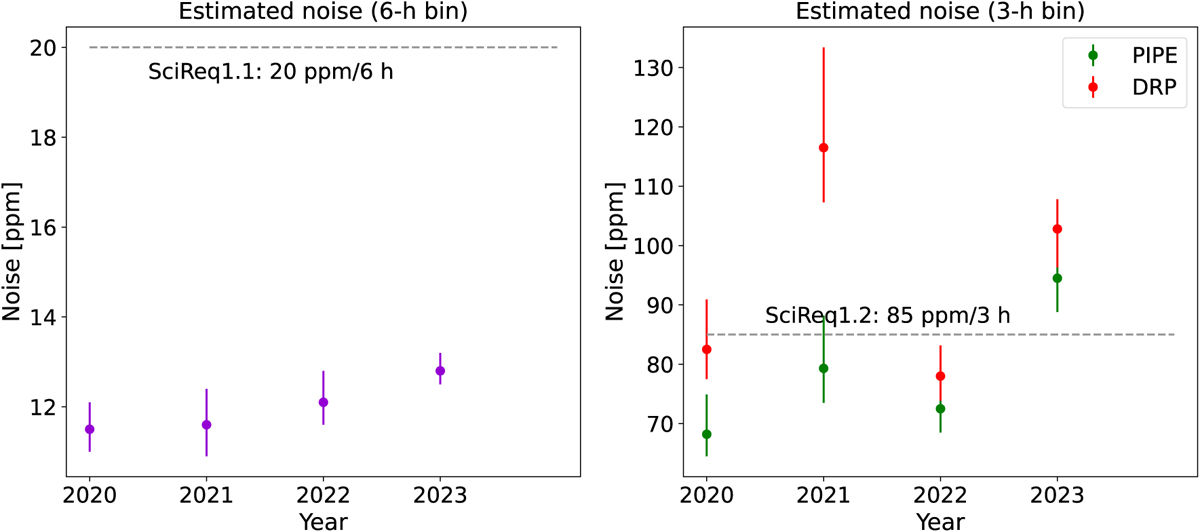Fig. 18

Download original image
Observation of the stars HD 88111 (V = 9.2 mag) and TYC 5502-1037-1 (V = 11.9 mag) throughout the duration of the nominal mission, monitored specifically to assess their compliance with SciReq. 1.1 and SciReq. 1.2, respectively. Left: noise estimation after 6 h of integration time, derived from the light curves of HD 88111. It is evident that bright targets (6 ≤ V ≤ 9 mag) comfortably comply with SciReq 1.1. Right: noise estimation after 3 h of integration time, calculated from the light curves of TYC 5502-1037-1 reduced with the DRP (red) and PIPE (green). Generally, faint targets with magnitudes around V ≲ 12 mag either marginally meet or fail to meet the criteria outlined in SciReq 1.2. The precision of light curves for faint targets is more sensitive to contamination effects, including stray light, as well as the duration of interruptions and the presence of bad pixels. These factors contribute to the variability observed in the precision of their light curves, in particular when the light curve is calculated by the DRP, as PIPE is less sensitive to these effects. The photometry was obtained with DRP v14 using the OPTIMAL aperture, and the noise was estimated using the scaled error method (all scaling factors were well below 2; see Maxted et al. 2022a).
Current usage metrics show cumulative count of Article Views (full-text article views including HTML views, PDF and ePub downloads, according to the available data) and Abstracts Views on Vision4Press platform.
Data correspond to usage on the plateform after 2015. The current usage metrics is available 48-96 hours after online publication and is updated daily on week days.
Initial download of the metrics may take a while.


